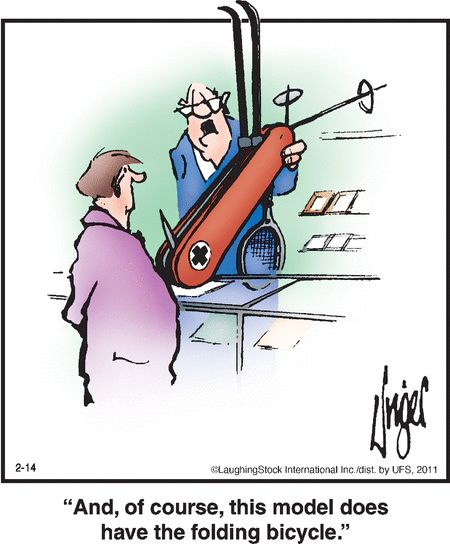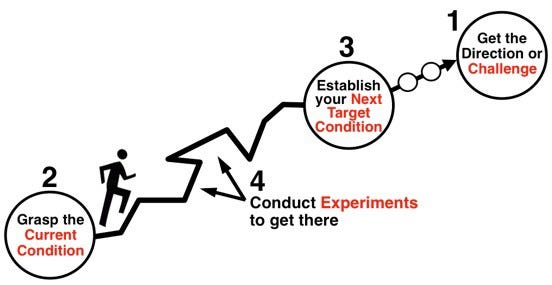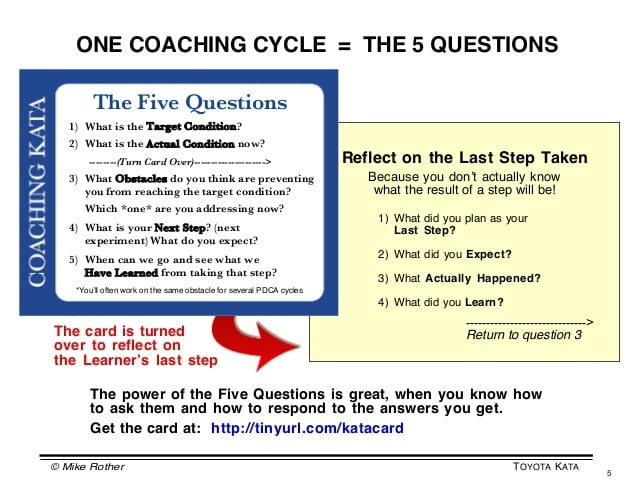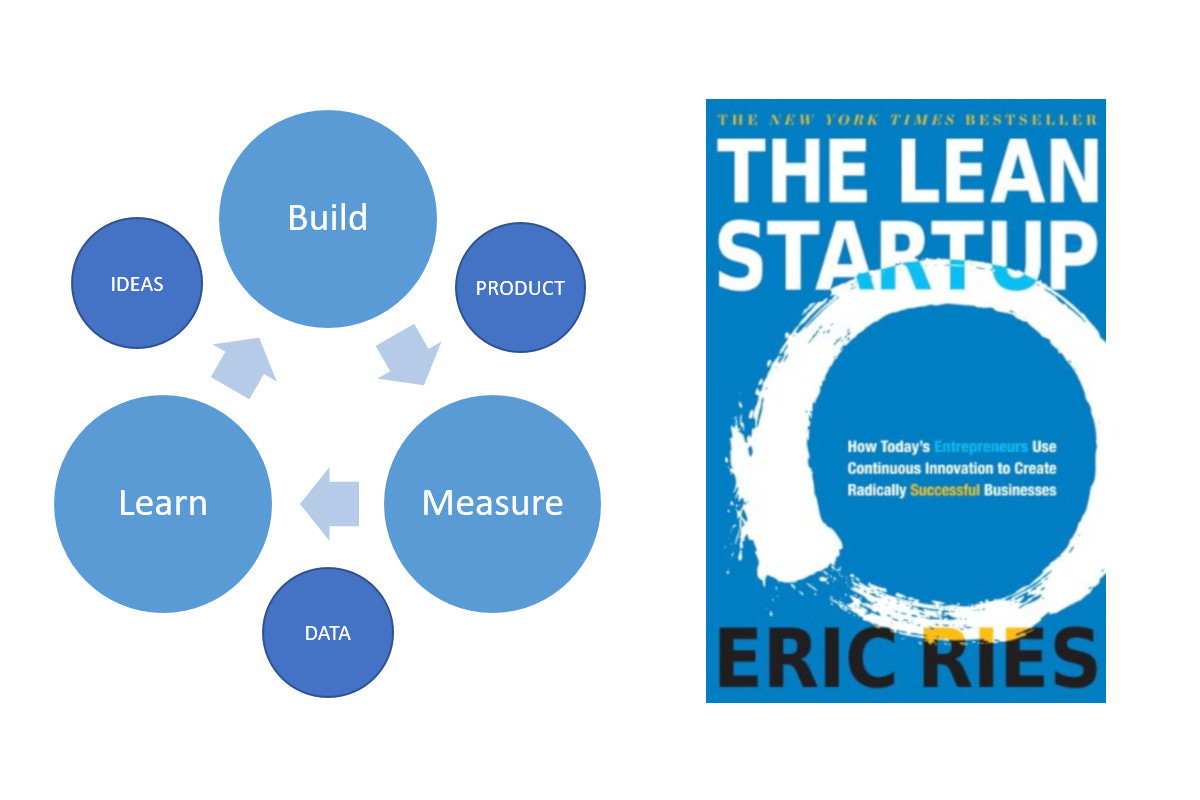The Shewhart Cycle
A Flow Diagram for Learning
The PDSA Cycle
This cycle (Fig. 13) is a flow diagram for learning, and for improvement of a product or of a process.
Step 1. PLAN. Somebody has an idea for improvement of a product or of a process. This is the 0-th stage, embedded in Step 1. It leads to a plan for a test, comparison, experiment. Step 1 is the foundation of the whole cycle. A hasty start may be ineffective, costly, and frustrating. People have a weakness to short-circuit this step. They cannot wait to get into motion, to be active, to look busy, move into Step 2…
Step 2. DO. Carry out the test, comparison, or experiment, preferably on a small scale, according to the layout decided in Step 1.
Step 3. STUDY. Study the results. Do they correspond with hopes and expectations? If not, what went wrong? Maybe we tricked ourselves in the first place, and should make a fresh start.
Step 4. ACT. Adopt the change, or abandon it, or run through the cycle again, possibly under different environmental conditions, different materials, different people, different rules.
The reader may note that to adopt the change, or to abandon it, requires prediction.
- Deming, Dr. W.E. The New Economics, 3rd ed. (pp. 91-92)
THE AIM of today’s post is to introduce the grandfather of all process improvement/learning loops that we take for granted today, The Shewhart Cycle, aka The Deming Cycle, or the PDSA Cycle. As with the Shewhart Chart, this model traces its conception to the original work of Dr. Walter Shewhart at Bell Labs in the late 1920s, who would introduce it to Dr. Deming, who in turn would use it in his early lectures with Japanese top-management and engineers:
The Shewhart Cycle was on the blackboard for top management for every conference beginning in 1950 in Japan. I taught it to engineers—hundreds of them—that first hot summer. More the next summer, six months later, and more six months after that. And the year after that, again and again.
- Dr. W.E. Deming as quoted by: Walton, Mary. The Deming Management Method. (p. 86)
Dr. Shewhart’s model began as a simple outline of three steps for quality control that he published on the first page of the first chapter of his 1939 book, Statistical Method from the Viewpoint of Quality Control:
Introduction. Three steps in quality control. Three senses of statistical control. Broadly speaking, there are three steps in a quality control process: the specification of what is wanted, the production of things to satisfy the specification, and the inspection of the things produced to see if they satisfy the specification. Corresponding to these three steps there are three senses in which statistical control may play an important part in attaining uniformity in the quality of a manufactured product: (a) as a concept of a statistical state constituting a limit to which one may hope to go in improving the uniformity of quality; (b) as an operation or technique of attaining uniformity; and (c) as a judgment.
Shewhart, Walter A.. Statistical Method from the Viewpoint of Quality Control (Dover Books on Mathematics) (p. 1). Dover Publications. Kindle Edition.
He presents this model graphically in two modes later in the chapter, with the first separating each stage into independent components (“old” in 1939!) and transformed as reinforcing loop of dependent components that constitute a “dynamic scientific process of acquiring knowledge”
He explains the contrast of the two models as the difference in thinking of the process as an “exact science” and as a means of “acquiring knowledge”, in other words acknowledging the presence of variation in the process which makes it very much a non-exact science:
On the older concept of an exact science these three steps (call them I, II, and III) would be independent. One could specify what he wanted, someone else could take this specification as a guide and make the thing, and an inspector or quality judge could measure the thing to see if it met specifications. A beautifully simple picture! …
I think it is particularly important to note that the third step can not be taken by simply inspecting the quality of the objects as objects, but instead must be taken by inspecting the objects in a sequence ordered in relation to the production process. In fact these three steps must go in a circle instead of in a straight line, as shown schematically in fig. 10. It may be helpful to think of the three steps in the mass production process as steps in the scientific method. In this sense, specification, production, and inspection correspond respectively to making a hypothesis, carrying out an experiment, and testing the hypothesis. The three steps constitute a dynamic scientific process of acquiring knowledge.
Shewhart, Walter A.. Statistical Method from the Viewpoint of Quality Control (Dover Books on Mathematics) (pp. 44-45). Dover Publications. Kindle Edition.
In the software world, we forgot all about these distinctions when we misinterpreted Winston Royce’s staged software delivery model as being like Shewhart’s linear, “old” one-shot and not a continuous loop. For over forty years we forgot to go back to the first stage, and even now in the second decade of official “agile software development practices” we still see development as an “exact science” without inherent variation.
Subsequently, over the intervening decades between 1950 and 1982 Dr. Deming would evolve the Shewhart Cycle by adding a fourth stage, “Act” along with provisos that he would later publish in The New Economics for small-scale tests and a decision point in the fourth stage on whether to continue with the cycle.
Application
Like much of Deming’s philosophy on management, using PDSA cycle for guiding improvement is both trivial and difficult, owing to how simply it can be explained yet dependent on sweat equity to pay any worthwhile dividend. As he often said, there’s no “instant pudding”.
In their 2009 book, The Improvement Guide, Ron Moen, Cliff Norman, and associates observe that “not all improvements require PDSA cycles; some just happen”, but more purposeful ones in complex environments benefit from running several loops. We have a tendency here in Canada and the United States to sub-optimize learning cycles by rushing through the stages and giving, as Latzko and Saunders note in Four Days with Dr. Deming, “the short-shrift"“ to the most important stage, “Plan”, opting to “test first and design later”.
Moen and Norman suggest asking three questions to help frame the planned change you want to make, and results of a successful “turn”:
What are we trying to accomplish? (A written statement of what the aim of the change effort is supposed to effect.)
How will we know that a change is an improvement? (What measures will change as a result of our experiment?)
What changes can we make that will result in improvement?
Note how using the PDSA model requires us to make a prediction about the future using our present knowledge and data by proposing a hypothesis for improvement. If we change this aspect of the process, we expect this outcome as evidenced by our measurement changing in this direction or trajectory.
As Moen and Norman explain:
The PDSA cycle is a vehicle for learning and action. The three most common ways for using the cycle as part of an improvement effort are:
To build knowledge to help answer any one of the three questions
To test a change
To implement a change
(Kindle Edition loc 2057)
Other Applications
A more prescriptive application for using PDSA cycles can be found in Mike Rother’s Toyota Kata method which embeds them into a framework for promoting scientific thinking and learning in complex environments. In the diagram below, PDSAs are used to structure the experiments to achieve a target condition.
This method enjoys some popularity in many organizations, although few actually understand how to apply it properly in their context. One potential trip-up is how to structure a hypothesis for the Target Condition so as to avoid falling into a confirmation-bias loop, ie. trying to “prove the hypothesis” to prove ourselves correct, which can lead to false-learning curves. Not a good situation! ProTip: Use falsifiable hypotheses, instead: Seek to learn by disproving your assumptions, as Chanticleer the Rooster discovered when he slept in and found his crowing did not in fact cause the sun to rise.
One added benefit to Rother’s model is the partnering of “Learners” with “Coaches” who ask a series of structured questions to help guide improvement efforts. However, again, be cautious about falling into an “expectations loop”, here:
You can learn more about Toyota Kata by checking out the resources on Mike Rother’s U of Michigan site, here.
Evidence of the influence of Dr. Shewhart’s cycle can also be found in Eric Ries’ famous Build-Measure-Learn entrepreneurial innovation cycle first published in his influential and groundbreaking 2011 book, The Lean Startup. Similar to Deming’s model, Ries famously proposed that after running through his cycle and landing on “Learn”, entrepreneurs are faced with a choice: Pivot to a new model or application or Persevere?
Reflection Questions
You can begin using a PDSA loop almost immediately, however you want to think about the change you want to make, first. Is it significant enough to warrant a PDSA loop for capturing learning, or is it something we can do quickly to see what happens? As Deming said at one of his seminars:
Do the experiments under different conditions. We want to be able to predict conditions. We want to be able to predict but we can’t be sure. If I let go of this pen, I have a high degree of belief it will fall. It has always been the case!
- Latzko & Saunders. Four Days with Dr. Deming. (p. 65)
In selecting your change, think about the three questions proposed by Ron Moen and Cliff Norman above, and what you hope to gain by creating an experiment. What data do you need to gather to know if you’ve been successful? What do you understand about the current state of the process or procedure you want to change? Do you have a process flow map to indicate where the change will occur and where you anticipate the resulting improvement? What will be your plan for carrying it out? Using what steps?
In answering these questions during planning, you may discover that the change or “move” as the Institute for Quality and Innovation’s Eric Budd would call them, is too big and needs to be scaled back. That’s ok and perfectly expected - don’t let that get in your way. Try it out for yourself, involve colleagues. Learn, have fun, make a difference!








